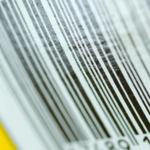
A Simplified Explanation of GS 1 US Barcodes for New Users
September 14, 2024
What is a GTIN Number & How can I Obtain One?
November 14, 2024Contents
- 1 Understanding Barcodes and Their Role
- 1.1 Why GS1 US Barcodes Are Important for Amazon Sellers
- 1.2 GS1 Barcodes Advantages
- 1.3 Alternative Solutions: GTIN Exemptions
- 1.4 Risks of Using Third-Party Barcodes
- 1.5 How to Obtain a GS1 Barcode
- 1.6 Practical Tips for Sellers
- 1.7 Ensuring Long-Term Success
- 1.8 Get High-Quality Product Labels
- 1.9 Contact us now for Questions
Selling on Amazon has become essential for businesses seeking a wider audience. However, one of the first challenges sellers encounter is understanding the barcode requirements for their products. We will examine why GS1 US barcodes are necessary for selling on Amazon, their importance, and exemptions.
Understanding Barcodes and Their Role
Barcodes are a part of e-commerce and retail. They uniquely identify products, which helps with tracking, inventory management, and order fulfillment. On Amazon, barcodes make it easier for customers to find and purchase items and help maintain an organized marketplace.
UPC (Universal Product Code) and EAN (European Article Number) are the most common barcodes. Both UPC and EAN are part of a broader category called GTIN (Global Trade Item Number). GTIN codes, or Global Trade Item Numbers, uniquely identify products and ensure accurate listings on platforms like Amazon. They include formats like UPC and EAN and streamline inventory management and sales.
Why GS1 US Barcodes Are Important for Amazon Sellers
Amazon Seller Central has stringent policies regarding the authenticity and identification of products. The platform requires sellers to use barcodes registered through GS1 (GS1 US for U.S.-based), a global standards organization. GS1 barcodes link the UPC prefix directly to the brand owner or company.
Key Points About GS1 US Barcodes:
- GS1 is the only authorized provider of legitimate UPC and EAN codes.
- Amazon often flags barcodes obtained from third-party sellers as invalid, leading to suppressed listings or account suspension.
- Registering your barcode with GS1 connects your brand to your product listings and promotes brand recognition and trust.
GS1 Barcodes Advantages
- Compliance with Amazon Policies: Amazon checks barcodes against the GS1 database to confirm they are valid. Using GS1 barcodes for your product meets Amazon’s requirements and avoids non-compliance issues.
- Brand Authenticity: When your barcode is linked to your brand through GS1, it enhances your credibility. Customers are more likely to confide in your listings if they know the products are genuine.
- Ease of Brand Registry: Joining Amazon’s Brand Registry protects your brand and provides enhanced marketing tools. To join Amazon’s brand registry, your UPC must be registered with GS1, as third-party codes do not meet this criterion.
Alternative Solutions: GTIN Exemptions
While GS1 barcodes are the standard, there are exceptions. Amazon allows sellers to apply for a GTIN exemption under certain conditions. This can benefit those selling handmade products, private-label, or generic products. Applying for a GTIN exemption involves a few steps:
- Proof of No Existing GTIN: Provide documentation showing that your product does not already have a GTIN.
- Product Images: Submit images showing the product and packaging without barcodes.
- Additional Verification: Include letters or documents from the brand owner or manufacturer if needed.
If approved, the GTIN exemption allows you to list products without purchasing a GS1 barcode. However, keep in mind that GTIN exemptions are only valid for specific categories.
Risks of Using Third-Party Barcodes
Sellers may be tempted to purchase cheaper barcodes from third-party resellers. While these resellers claim their codes are “GS1-registered,” they often sell recycled codes that do not link to the seller’s brand. This can lead to several problems:
- Suppressed Listings: Amazon frequently checks the GS1 database to verify barcode legitimacy. If your UPC does not match the brand or company name in the database, your listing may be suppressed, affecting your sales.
- Account Suspension: Using non-compliant barcodes can lead to account suspension, causing significant business disruptions and loss of revenue.
- Brand Registry Ineligibility: Enrolling in Amazon’s Brand Registry requires that your UPC code is directly tied to your brand. Barcodes from third-party resellers often do not meet this requirement.
How to Obtain a GS1 Barcode
Obtaining a GS1 barcode may seem complex, but the process is straightforward. Here’s a step-by-step guide:
- Register Your Company with GS1: Visit the GS1 website and create an account for your business.
- Choose the Number of Barcodes: Select how many barcodes you need based on the number of products you plan to list.
- Pay the Fees: Pay the initial registration and annual renewal fees to maintain your barcodes.
- Receive Your Prefix and Barcodes: GS1 will assign you a company prefix that links directly to your brand. This prefix ensures that your products are identified correctly.
- Create your Labels: Once you have your barcode labels, you can create and customize them. Be sure to use a reputable GS 1 US label provider like AccuGraphiX to create your labels for you.
GS1 barcodes cost more than third-party options, but they provide important long-term benefits. They help you stay compliant, give you peace of mind, and allow for easier integration with Amazon’s systems.
Practical Tips for Sellers
- Plan Ahead: Before you launch your products, make sure you understand Amazon’s barcode requirements and obtain the necessary GS1 barcodes.
- Avoid Shortcuts: While using third-party barcodes may save money at first, they can result in expensive problems in the future.
- Evaluate Your Business Needs: If you are starting and unsure about committing to GS1, consider applying for a GTIN exemption for specific products. However, keep in mind that this is a short-term solution.
Ensuring Long-Term Success
Selling on Amazon requires careful adherence to the platform’s guidelines. Having GS1 barcodes is a crucial component of this compliance. While GTIN exemptions and third-party barcodes may appear viable shortcuts, they come with significant risks that can affect your business’s stability and reputation. Investing in GS1 barcodes supports long-term growth, ensures your product listings remain compliant, and builds brand credibility. For sellers committed to establishing a trustworthy and successful presence on Amazon, GS1 barcodes are not just beneficial—they’re essential. Understanding these requirements and preparing your business can set the foundation for success.
Get High-Quality Product Labels
Ensure your products stand out and meet Amazon’s requirements by creating professional product labels with AccuGraphiX. Design and print labels that match your GS1 barcodes seamlessly. Simplify your labeling process and present your products with confidence.




